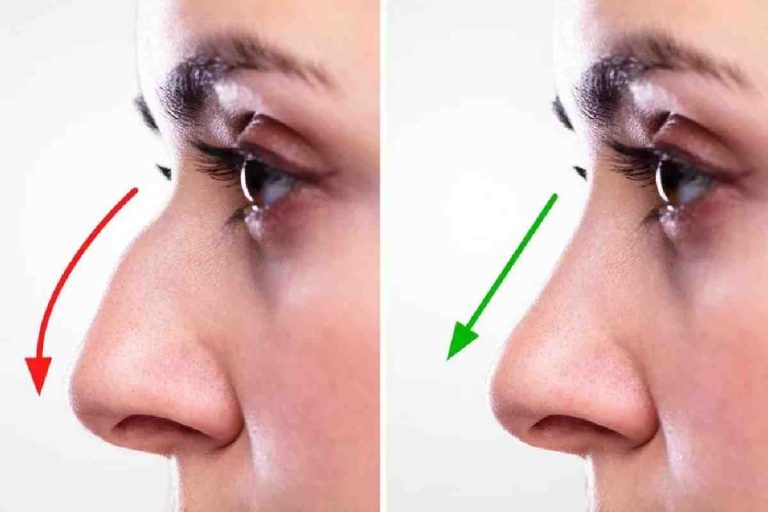A nose job, or rhinoplasty, is a surgical procedure that alters the shape of the nose for aesthetic or functional reasons. While many achieve satisfactory results, some get a bad nose job.
Understanding what constitutes a bad nose job is crucial for anyone considering this procedure.
You might opt for a nose job to improve your appearance, enhance nasal functionality, or ensure your facial features are balanced and proportional. A successful rhinoplasty Turkey can boost your self-esteem and improve your quality of life.
A bad nose job can manifest in poor aesthetic results, functional issues, or negative psychological impacts. It’s essential to recognize the signs and seek appropriate corrections if necessary.
Table of Contents
Aesthetic Issues in a Bad Nose Job
Aesthetic issues following a rhinoplasty can significantly impact your appearance and self-esteem. Here are some common problems:
Asymmetry
Asymmetry occurs when the two sides of your nose do not match, creating an uneven appearance. This can be due to uneven removal or reshaping of nasal cartilage and bone. Even a slight asymmetry can be noticeable and distressing.
Over-Resection or Under-Resection
- Over-resection happens when too much tissue is removed from your nose, leading to a pinched or overly narrow appearance. Over-resection can also cause structural weaknesses.
- Under-Resection: When insufficient tissue is removed, your nose might still look disproportionate or too large, failing to meet your aesthetic goals.
Disproportionate Size or Shape
A nose that is too large, too small, or oddly shaped about your other facial features can disrupt harmony. This might include:
- Humps and Bumps: Irregularities on the bridge of your nose that are often the result of incomplete smoothing.
- Bulbous Tip: An overly round or bulbous nasal tip can result from inadequate refinement or reshaping of the tip cartilage.
- Functional Problems
Functional issues can severely affect your quality of life post-rhinoplasty. These problems might take time to be apparent but can develop over time.
- Breathing Difficulties
Breathing problems are a common issue following a bad nose job. They can arise from:
- Nasal Obstruction: Caused by swelling, scar tissue, or improper alignment of nasal structures.
- Deviated Septum: If the septum is not correctly aligned during surgery, it can obstruct airflow.
- Nasal Valve Collapse: The nasal valve is the narrowest part of the airway, and its collapse can lead to significant breathing difficulties. This can happen if too much cartilage is removed, weakening the nasal structure.
- Persistent Swelling and Inflammation: Chronic swelling and inflammation can be signs of poor healing or ongoing issues with the nasal tissues. Resolving these might require additional medical intervention.
Causes of a Bad Nose Job
Understanding the causes of a bad nose job can help you avoid pitfalls and make informed decisions.
Inadequate Surgical Skill
The skill and experience of your surgeon are critical. Issues can arise from:
- Lack of Experience: Surgeons with specialized training in rhinoplasty may need more finesse for this delicate procedure.
- Technical Errors: Even experienced surgeons can make mistakes, leading to unsatisfactory results.
Signs of a Bad Nose Job
- Visible Scarring: Prominent scars that are aesthetically displeasing.
- Irregularities and Bumps: Unwanted contours and lumps.
- Difficulty Breathing Through the Nose: New or worsened breathing issues post-surgery.
Emotional and Psychological Impact
- Dissatisfaction and Regret: Feeling unhappy with the results.
- Decreased Self-Esteem: Negative feelings about your appearance.
- Social Anxiety: Avoiding social interactions due to self-consciousness about your nose.
Preventing a Bad Nose Job
Preventing a bad nose job involves careful planning, thorough research, and clear communication with your surgeon. Here are several key steps to help you avoid undesirable outcomes and ensure a successful rhinoplasty.
Choosing a Qualified Surgeon
The most critical factor in achieving a successful nose job is selecting a highly qualified and experienced surgeon.
- Board Certification: Ensure your surgeon is board-certified in plastic surgery or otolaryngology (ear, nose, and throat). This certification indicates they have undergone extensive training and adhere to high standards of practice.
- Experience and Specialization: Choose a surgeon who specializes in rhinoplasty and has significant experience performing the procedure. Review their portfolio of before-and-after photos to gauge their skill and aesthetic sense.
- Reputation and Reviews: Look for reviews and testimonials from previous patients. Positive feedback and a strong reputation in the medical community can be good indicators of a competent surgeon.
Clear Communication and Realistic Goals
Clear communication with your surgeon ensures your goals and expectations are understood and achievable.
- Detailed Consultation: Schedule a comprehensive consultation where you can discuss your aesthetic desires and functional needs. Bring photos or examples to illustrate the look you are aiming for.
- Understanding Limitations: Have an open conversation about what is realistically achievable given your unique nasal anatomy and any medical considerations. This helps set realistic expectations and prevents disappointment.
- Question and Answer: Prepare a list of questions to ask your surgeon during the consultation. Inquire about their approach, the techniques they will use, and the potential risks and complications.
Making informed decisions is crucial for achieving a successful rhinoplasty and avoiding the pitfalls of a bad nose job.
Ready to learn more about rhinoplasty and ensure the best care for your procedure? Visit Flymedi to explore expert advice, find top-rated surgeons, and book your consultation today. Start your journey to a beautiful, confident you with Flymedi.


